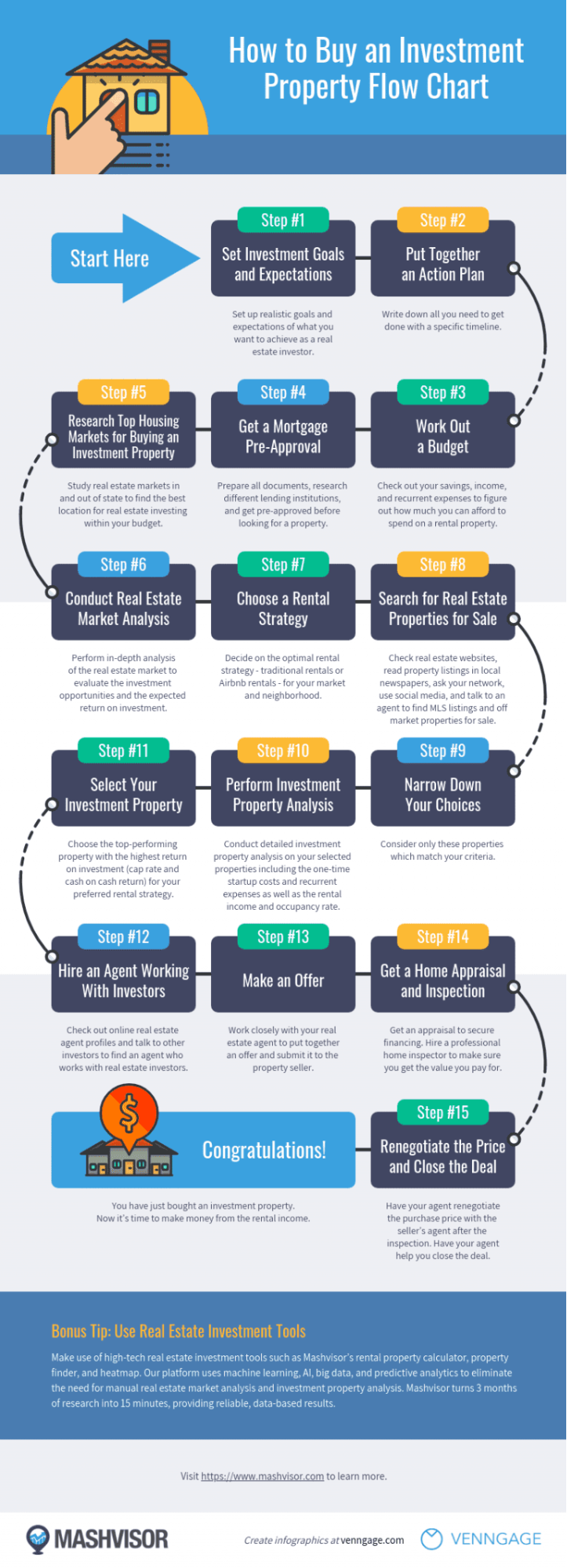How to Build a Property Portfolio in Australia (Even If You’re on an Average Salary)
Australia’s property market is often painted as a playground for the wealthy, but here’s a surprising truth: even an average salary can be the foundation of a thriving property portfolio. In a landscape where skyrocketing prices dominate headlines, the overlooked reality is that strategic planning, not just income, determines success.
Right now, as interest rates stabilize and regional markets gain momentum, opportunities are emerging for savvy investors to enter the game. But here’s the tension: how do you balance affordability with long-term growth potential?
This journey isn’t just about buying properties—it’s about leveraging financial tools, understanding market dynamics, and crafting a vision that transforms modest means into substantial wealth. Let’s explore how the ordinary can achieve the extraordinary.
Why Real Estate Investment Matters
Real estate investment stands apart due to its unique ability to combine stability with growth, offering a tangible asset that appreciates over time while generating consistent cash flow. Unlike volatile equities or low-yield savings, property provides a dual advantage: capital growth and income generation. This duality is particularly critical in Australia, where population growth and urban expansion fuel long-term demand for housing.
One overlooked factor is the compounding effect of rental income reinvestment. By directing rental returns into additional property acquisitions or mortgage repayments, investors can accelerate portfolio growth. For instance, leveraging positive cash flow properties in regional markets can offset higher costs in metropolitan areas, creating a balanced, scalable strategy.
Moreover, real estate’s resilience to inflation is a game-changer. As living costs rise, so do property values and rental yields, safeguarding wealth. This interplay between inflation and asset appreciation underscores why real estate remains a cornerstone of diversified investment portfolios.
Looking ahead, integrating emerging trends—such as sustainable housing or tech-driven property management—can further amplify returns, ensuring relevance in a rapidly evolving market.
Key Benefits of an Australian Property Portfolio
One critical yet underappreciated benefit of an Australian property portfolio is its ability to act as a financial buffer during economic downturns. Unlike equities, which can experience sharp declines, property values tend to exhibit greater stability due to consistent housing demand. This is particularly evident in Australia, where population growth and urbanization create a persistent need for residential properties.
A well-structured portfolio also enables geographic diversification, reducing risk exposure. For example, combining properties in high-growth regional areas with metropolitan investments balances potential volatility in any single market. This approach leverages Australia’s varied economic drivers, such as mining in regional hubs and technology in urban centers.
Additionally, tax incentives like negative gearing and depreciation schedules can significantly enhance cash flow, making property investment more accessible even for those on average incomes. By strategically reinvesting these savings into portfolio expansion, investors can compound their returns.
Looking forward, embracing sustainable property features can future-proof portfolios, aligning with evolving market preferences and regulatory trends.
Essential Foundations
Building a property portfolio on an average salary begins with mastering financial discipline. Start by creating a detailed budget that prioritizes savings for deposits and accounts for ongoing costs like maintenance and insurance. For instance, allocating 20% of your income to a high-interest savings account can accelerate your first purchase.
Next, leverage strategic borrowing. Opt for loan structures that maximize flexibility, such as offset accounts, which reduce interest while maintaining liquidity. Case studies show that investors who use offset accounts save thousands over the loan term, enabling faster portfolio growth.
Additionally, focus on market research. Identify undervalued suburbs with upcoming infrastructure projects or demographic shifts. For example, areas near new transport hubs often experience above-average capital growth.
Finally, challenge the misconception that high income is essential. Instead, consistent reinvestment of rental income and tax benefits like depreciation can significantly amplify returns, proving that strategy outweighs salary.
Property Types and Investment Goals
Aligning property types with investment goals requires a nuanced understanding of market dynamics and personal objectives. For cash flow-focused investors, high-yield properties in regional areas often outperform due to lower entry costs and stable rental demand. For instance, towns with strong employment hubs, like Ballarat, offer consistent yields while minimizing vacancy risks.
Conversely, capital growth seekers may prioritize metropolitan properties in gentrifying suburbs. Areas undergoing urban renewal or infrastructure upgrades, such as new transport links, often experience accelerated appreciation. A Sydney investor, for example, leveraged equity from a high-growth property in Parramatta to fund additional acquisitions.
A lesser-known strategy involves mixed-use properties, which combine residential and commercial spaces. These assets diversify income streams and hedge against market volatility. However, they require careful zoning and tenant management.
To maximize returns, investors should periodically reassess their portfolio’s alignment with evolving goals. Tools like HtAG Analytics or government infrastructure trackers can provide actionable insights, ensuring each property serves a strategic purpose.
Basic Financial Literacy for Borrowing and Taxes
Understanding the interplay between borrowing strategies and tax benefits is pivotal for building a sustainable property portfolio. One critical yet underutilized approach is leveraging interest-only loans during the initial years of property ownership. This strategy minimizes monthly repayments, freeing up cash flow for reinvestment or emergency reserves. For example, an investor using an interest-only loan for five years can redirect the savings into high-yield properties or offset accounts, accelerating portfolio growth.
Tax literacy is equally essential. Beyond negative gearing, investors should explore depreciation schedules, which allow deductions for wear and tear on assets like fixtures and fittings. A property with $10,000 in annual depreciation can reduce taxable income significantly, enhancing cash flow. Pairing this with a high-quality tax advisor ensures compliance while maximizing returns.
Lesser-known factors, such as land tax thresholds varying by state, can impact profitability. Investors should diversify geographically to optimize tax obligations. By integrating these financial tools with disciplined budgeting, investors can create a resilient framework for long-term success, even on modest incomes.
Securing Financing and Optimizing Borrowing Capacity
Securing financing begins with understanding borrowing capacity, which hinges on factors like income, expenses, and credit profile. A common misconception is that high income alone guarantees approval. Instead, reducing discretionary spending and consolidating debts into lower-interest loans can significantly improve serviceability. For instance, a dual-income household earning $150,000 annually increased their borrowing capacity by $100,000 by refinancing their mortgage to a 30-year term.
To optimize borrowing, leverage rental income potential. Lenders often include 70–80% of projected rental income in their calculations, boosting capacity. Additionally, interest-only loans can temporarily enhance cash flow, though they require careful long-term planning.
Unexpectedly, geographic diversification can also influence financing. Properties in high-demand regional areas often yield higher rental returns, improving lender confidence. Partnering with a mortgage broker ensures tailored solutions, such as matching loan structures to investment horizons.
By combining disciplined financial habits with strategic loan selection, investors can unlock sustainable growth opportunities, even on modest incomes.
Navigating Lending Criteria and LVR Requirements
Understanding and navigating Loan-to-Value Ratio (LVR) requirements is pivotal for securing financing while minimizing costs. LVR, the ratio of the loan amount to the property’s value, directly impacts both loan approval and associated expenses like Lenders Mortgage Insurance (LMI). For instance, maintaining an LVR of 80% or below often eliminates the need for LMI, saving investors thousands of dollars over the loan term.
However, lenders’ criteria extend beyond LVR thresholds. Factors such as property location, type, and borrower profile play a critical role. Properties in small towns or niche markets may face stricter LVR caps, such as 70–90%, due to perceived higher risk. Investors can counteract this by targeting properties in growth corridors with strong rental demand, which lenders view more favorably.
A lesser-known strategy involves leveraging split loans—combining fixed and variable rates—to balance flexibility with predictability. This approach can help investors manage cash flow while meeting lender requirements.
Additionally, lenders often assess genuine savings for high-LVR loans. Demonstrating consistent savings over six months can strengthen applications. By aligning property choices with lender preferences and strategically managing LVR, investors can unlock financing opportunities while reducing long-term costs.
Maximizing Borrowing Potential on an Average Salary
One overlooked yet effective strategy for maximizing borrowing potential is leveraging income diversification. Beyond traditional employment, supplementary income streams—such as freelance work, rental income, or dividends—can significantly enhance serviceability in lenders’ assessments. For example, a part-time consultant earning $60,000 annually increased their borrowing capacity by $50,000 by adding $10,000 in consistent freelance income over 12 months.
Another critical factor is optimizing debt-to-income ratios. Consolidating high-interest debts, such as credit cards, into lower-interest personal loans reduces monthly obligations, improving net income. A borrower with $15,000 in credit card debt at 18% interest saved $3,000 annually by refinancing to a 7% personal loan, directly boosting their borrowing capacity.
Lesser-known influences include seasonal income adjustments. Lenders often average income over a set period, so timing applications after a bonus or pay rise can yield higher borrowing limits. Additionally, reducing unused credit card limits—often overlooked—can improve credit profiles, as lenders view these as potential liabilities.
By combining these strategies with disciplined financial planning, average earners can unlock greater borrowing potential, positioning themselves for sustainable property investment growth in evolving market conditions.
Building and Managing Your Property Portfolio
Effective portfolio management begins with treating your investments like a business. This means setting measurable goals, tracking performance, and making data-driven decisions. For instance, a Brisbane investor who regularly reviewed rental yields and market trends identified an underperforming property and reinvested its equity into a high-growth suburb, boosting annual returns by 12%.
A critical yet underestimated strategy is proactive maintenance. Think of your properties as assets that require regular upkeep to retain value. Preventative measures, such as annual inspections, can save thousands in unexpected repairs while maintaining tenant satisfaction and reducing vacancy rates.
Diversification is another cornerstone. Balancing properties across regional and metropolitan areas mitigates risks tied to localized market downturns. For example, pairing a high-yield regional property with a capital-growth-focused urban asset creates a resilient portfolio.
Finally, leverage technology-driven tools like property management platforms to streamline operations. These tools provide real-time insights into cash flow, tenant management, and market analytics, ensuring informed decision-making and long-term success.

Image source: mashvisor.com
Property Selection, Market Analysis, and Diversification
A nuanced approach to property selection begins with identifying micro-market trends that often go unnoticed. While macroeconomic factors like population growth and infrastructure projects are critical, hyper-local elements—such as school catchment zones or proximity to lifestyle amenities—can significantly influence demand. For example, properties within a 1-kilometer radius of top-performing schools in Melbourne have shown a 15% higher annual growth rate compared to surrounding suburbs.
Market analysis should integrate data-driven tools like CoreLogic or HtAG Analytics to uncover patterns in price trends, vacancy rates, and demographic shifts. These insights allow investors to anticipate market movements, such as gentrification, before they fully materialize. For instance, early investments in Brisbane’s Woolloongabba precinct, prior to its infrastructure boom, yielded returns exceeding 20% within three years.
Diversification extends beyond geographic spread. Investors should consider asset-type diversification, such as blending residential properties with commercial spaces or short-term rentals. This approach hedges against market-specific risks. For example, during economic downturns, high-yield regional properties often outperform urban assets, stabilizing cash flow.
To maximize outcomes, adopt a layered strategy: combine predictive analytics with on-the-ground research, ensuring each acquisition aligns with both short-term cash flow needs and long-term capital growth objectives.
Risk Management, Insurance, and Cash Flow Strategies
A critical yet underexplored aspect of risk management is the role of liquidity buffers in maintaining portfolio stability. While many investors focus on maximizing returns, insufficient cash reserves can lead to financial strain during unexpected events, such as tenant vacancies or emergency repairs. Maintaining a buffer equivalent to six months of property expenses ensures resilience against market fluctuations. For instance, an investor with a $500,000 property generating $25,000 in annual rent should allocate at least $12,500 as a contingency fund.
Insurance strategies also deserve deeper attention. Beyond standard landlord insurance, consider specialized coverage for natural disasters or tenant-related risks, particularly in regions prone to floods or bushfires. For example, properties in Queensland’s flood zones benefit from tailored policies that cover structural damage and rental income loss, safeguarding cash flow.
Cash flow strategies should integrate dynamic rent adjustments based on market conditions. Leveraging tools like CoreLogic’s rental analytics allows investors to identify optimal pricing, reducing vacancy periods. Additionally, pairing high-yield properties with interest-only loans during the initial years can free up capital for reinvestment, accelerating portfolio growth.
Looking ahead, combining liquidity planning, tailored insurance, and adaptive cash flow strategies positions investors to navigate uncertainties while capitalizing on emerging opportunities.
FAQ
What are the first steps to start building a property portfolio on an average salary?
Start by assessing your financial health, including assets, liabilities, and cash flow. Create a realistic budget to save for a deposit and manage ongoing costs. Research the market to identify high-demand areas with growth potential. Leverage equity or secure financing strategically, and set clear, actionable investment goals aligned with your income.
How can I maximize my borrowing capacity while managing financial risks?
Reduce discretionary spending and consolidate high-interest debts to improve serviceability. Leverage rental income potential and consider interest-only loans for initial cash flow flexibility. Maintain a strong credit profile and build liquidity buffers to mitigate risks. Partner with a mortgage broker to tailor financing solutions aligned with your long-term investment strategy.
What strategies can I use to identify high-growth areas for property investment?
Analyze data on infrastructure projects, employment growth, and population trends. Focus on suburbs with low vacancy rates, strong rental demand, and proximity to schools or transport hubs. Use tools like CoreLogic for market insights and consult local experts. Monitor rezoning plans and gentrification indicators to pinpoint areas with future growth potential.
How do tax benefits like negative gearing and depreciation impact my cash flow?
Negative gearing allows you to offset property losses against other income, reducing taxable income and improving cash flow. Depreciation deductions for building structures and assets further lower taxable income. Together, these benefits enhance affordability, enabling reinvestment into your portfolio while maintaining financial stability, even on an average salary.
What are the best practices for diversifying a property portfolio in Australia?
Diversify geographically by investing in both metropolitan and regional areas to balance risks. Include a mix of residential and commercial properties for varied income streams. Explore different strategies like buy-and-hold or short-term rentals. Consider Real Estate Investment Trusts (REITs) for indirect exposure, ensuring resilience against market fluctuations and long-term growth.








